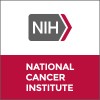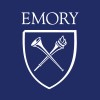
Antineoplaston Therapy in Treating Children With Rhabdoid Tumor of the Central Nervous System
Rhabdoid Neoplasm of CNSRATIONALE: Current therapies for childhood Rhabdoid tumors provide limited benefit to the patient. The anti-cancer properties of Antineoplaston therapy suggest that it may prove beneficial in the treatment of childhood Rhabdoid tumors. PURPOSE: This study is being performed to determine the effects (good and bad) that Antineoplaston therapy has on children (> 6 months of age) with Rhabdoid tumors.

Stereotactic Body Radiotherapy (SBRT) for Pulmonary Metastases in Ewing Sarcoma, Rhabdomyosarcoma,...
Ewing SarcomaRhabdomyosarcoma11 moreThis research study is studying stereotactic body radiotherapy (SBRT) as a possible treatment for lung relapse of Ewing sarcoma, rhabdomyosarcoma, osteosarcoma, non-rhabdomyosarcoma soft tissue sarcoma, Wilms tumor or other primary renal tumor (including clear cell and rhabdoid). SBRT is a form of targeted radiotherapy that can treat very small tumors using a few large doses.

Study to Describe the Interaction Between Tazemetostat and Itraconazole and Between Tazemetostat...
All MalignanciesAdvanced Malignancies10 moreThe participants of this study will have advanced malignancies (also known as advanced cancer). The main aim of this trial will be to study the blood levels (known as pharmacokinetics) of the tazemtostat (the study drug) when administered in combination with another drug. Part 1 of the study will evaluate the interaction between the drugs tazemetostat and itraconazole. Part 2 of the study will evaluate the interaction between the drugs tazemetostat and rifampin For both Parts 1 and 2, safety and the level that effects of the study drug can be tolerated (known as tolerability) will be assessed throughout.

Vorinostat and Temozolomide in Treating Young Patients With Relapsed or Refractory Primary Brain...
Childhood Atypical Teratoid/Rhabdoid TumorChildhood Central Nervous System Choriocarcinoma32 moreThis phase I trial is studying the side effects and best dose of vorinostat when given together with temozolomide in treating young patients with relapsed or refractory primary brain tumors or spinal cord tumors. Vorinostat may stop the growth of tumor cells by blocking some of the enzymes needed for cell growth. Drugs used in chemotherapy, such as temozolomide, work in different ways to stop the growth of tumor cells, either by killing the cells or by stopping them from dividing. Vorinostat may help temozolomide work better by making tumor cells more sensitive to the drug.

Testing Cerebrospinal Fluid for Cell-free Tumor DNA in Children, Adolescents, and Young Adults With...
Anaplastic AstrocytomaDiffuse Brainstem Glioma20 moreRecent advances in technology have allowed for the detection of cell-free DNA (cfDNA). cfDNA is tumor DNA that can be found in the fluid that surrounds the brain and spinal cord (called cerebrospinal fluid or CSF) and in the blood of patients with brain tumors. The detection of cfDNA in blood and CSF is known as a "liquid biopsy" and is non-invasive, meaning it does not require a surgery or biopsy of tumor tissue. Multiple studies in other cancer types have shown that cfDNA can be used for diagnosis, to monitor disease response to treatment, and to understand the genetic changes that occur in brain tumors over time. Study doctors hope that by studying these tests in pediatric brain tumor patients, they will be able to use liquid biopsy in place of tests that have more risks for patients, like surgery. There is no treatment provided on this study. Patients who have CSF samples taken as part of regular care will be asked to provide extra samples for this study. The study doctor will collect a minimum of one extra tube of CSF (about 1 teaspoon or 5 mL) for this study. If the patients doctor thinks it is safe, up to 2 tubes of CSF (about 4 teaspoons or up to 20 mL) may be collected. CSF will be collected through the indwelling catheter device or through a needle inserted into the lower part of the patient's spine (known as a spinal tap or lumbar puncture). A required blood sample (about ½ a teaspoon or 2 3 mL) will be collected once at the start of the study. This sample will be used to help determine changes found in the CSF. Blood will be collected from the patient's central line or arm as a part of regular care. An optional tumor tissue if obtained within 8 weeks of CSF collection will be collected if available. Similarities between changes in the DNA of the tissue that has caused the tumor to form and grow with the cfDNA from CSF will be compared. This will help understand if CSF can be used instead of tumor tissue for diagnosis. Up to 300 people will take part in this study. This study will use genetic tests that may identify changes in the genes in the CSF. The report of the somatic mutations (the mutations that are found in the tumor only) will become part of the medical record. The results of the cfDNA sequencing will be shared with the patient. The study doctor will discuss what the results mean for the patient and patient's diagnosis and treatment. There will not be any germline sequencing results reported and these will not be disclosed to the patient, patient's clinician or be recorded in patient medical record. Patient may be monitored on this study for up to 5 years.

Aflac ST0901 CHOANOME - Sirolimus in Solid Tumors
Ewing's SarcomaOsteosarcoma14 moreThe best treatment for recurrent cancers or those that do not respond to therapies is not known. Typically, patients with these cancers receive a combination of cancer drugs (chemotherapy), surgery, or radiation therapy. These treatments can prolong their life but may not offer a long-term cure. This study proposes using a drug called Sirolimus in combination with common chemotherapy drugs to treat patients with recurrent and refractory solid tumors. Sirolimus has been found to inhibit cell growth and to have anti-tumor activity in pediatric solid tumors in previous studies and, therefore, has the potential to increase the effectiveness of the chemotherapy drugs when given together. This study wil investigate the highest dose of Sirolimus that can be given orally with other oral chemotherapy drugs. Cohorts of 2 subjects will be started at the minimum dose. The dose will be increased in the next 2 subjects as long as there were no major reactions in the previous groups. This study will also seek to learn more about the side effects of sirolimus when used in this combination and what effects the drug has on the white cells and the immune system. Successful use of this drug will impact the cancer population greatly by providing an increased chance of survival to those with resistant or recurrent cancers.

Chemotherapy Combined With Radiation Therapy for Newly Diagnosed CNS AT/RT
Central Nervous System TumorPediatricRATIONALE: Drugs used in chemotherapy work in different ways to stop tumor cells from dividing so they stop growing or die. Radiation therapy uses high-energy x-rays to damage tumor cells. Giving more than one chemotherapy drug with radiation therapy may kill more tumor cells. PURPOSE: This phase II trial is studying how well giving intrathecal and systemic combination chemotherapy together with radiation therapy works in treating young patients with newly diagnosed central nervous system (CNS) atypical teratoid/rhabdoid tumors.

Oxaliplatin in Treating Children With Recurrent or Refractory Medulloblastoma, Supratentorial Primitive...
Brain and Central Nervous System TumorsRATIONALE: Drugs used in chemotherapy use different ways to stop tumor cells from dividing so they stop growing or die. PURPOSE: Phase II trial to study the effectiveness of oxaliplatin in treating children who have recurrent or refractory medulloblastoma, supratentorial primitive neuroectodermal or atypical teratoid rhabdoid tumor.

A Phase 1 Study of the EZH2 Inhibitor Tazemetostat in Pediatric Subjects With Relapsed or Refractory...
Rhabdoid TumorsINI1-negative Tumors2 moreThis is a Phase I, open-label, dose escalation and dose expansion study with BID (suspension) and TID (tablet) oral dose of tazemetostat. Subjects will be screened for eligibility within 14 days of the planned first dose of tazemetostat. A treatment cycle will be 28 days. Response assessment will be evaluated after 8 weeks of treatment and subsequently every 8 weeks while on study. The study has two parts: Dose Escalation and Dose Expansion. Dose escalation for subjects with the following relapsed/refractory malignancies: Rhabdoid tumors: Atypical teratoid rhabdoid tumor (ATRT) Malignant rhabdoid tumor (MRT) Rhabdoid tumor of kidney (RTK) Selected tumors with rhabdoid features INI1-negative tumors: Epithelioid sarcoma Epithelioid malignant peripheral nerve sheath tumor Extraskeletal myxoid chondrosarcoma Myoepithelial carcinoma Renal medullary carcinoma Other INI1-negative malignant tumors (e.g., dedifferentiated chordoma) (with Sponsor approval) Synovial Sarcoma with a SS18-SSX rearrangement Dose Escalation cohorts are closed to enrollment. Dose Expansion at the MTD or the RP2D Cohort 1 - ATRT (closed to enrollment) Cohort 2 - MRT/RTK/selected tumors with rhabdoid features (closed to enrollment) Cohort 3 - INI-negative tumors: Epithelioid sarcoma Epithelioid malignant peripheral nerve sheath tumor Extraskeletal myxoid chondrosarcoma Myoepithelial carcinoma Renal medullary carcinoma Chordoma (poorly differentiated or de-differentiated) Other INI1-negative malignant tumors (e.g., dedifferentiated chordoma) with Sponsor approval Cohort 4 - Tumor types eligible for Cohorts 1 through 3 or synovial sarcoma with SS18-SSX rearrangement (closed to enrollment)

Wild-Type Reovirus in Combination With Sargramostim in Treating Younger Patients With High-Grade...
Childhood AstrocytomaChildhood Atypical Teratoid/Rhabdoid Tumor8 moreThis phase I trial studies the side effects and the best dose of wild-type reovirus (viral therapy) when given with sargramostim in treating younger patients with high grade brain tumors that have come back or that have not responded to standard therapy. A virus, called wild-type reovirus, which has been changed in a certain way, may be able to kill tumor cells without damaging normal cells. Sargramostim may increase the production of blood cells and may promote the tumor cell killing effects of wild-type reovirus. Giving wild-type reovirus together with sargramostim may kill more tumor cells.
